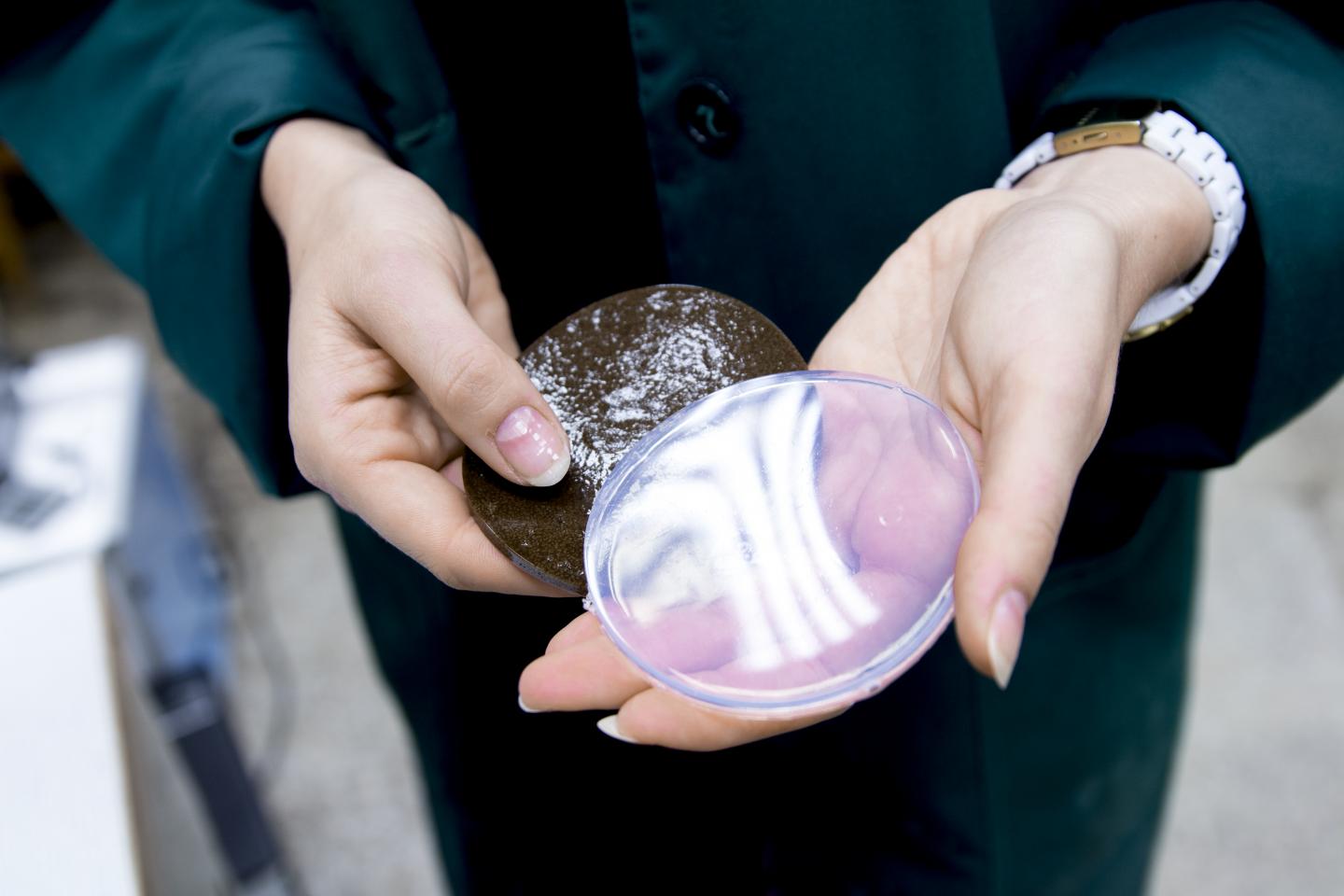
Antimicrobial silicone has an antimicrobial effect both on gram-positive and on gram-negative microbial strains and fungi. Image: Kaunas University of Technology
Kaunas University of Technology (KTU) laboratories often serve as birthplaces of unique products, such as antimicrobial silicone invented by Aiste Lisauskaite and her supervisor Dr. Virginija Jankauskaite. The researchers believe that the new product will be extremely useful both for household and medical purposes.
Lisauskaite, who is a PhD student at the KTU Faculty of Mechanical Engineering and Design, Department of Materials Engineering, presented her invention at the Life Sciences Baltics Conference last year. Her innovation was selected as one of the top five at the conference, and received enormous attention of industry professionals from various countries.
“The silicone has antimicrobial effect both on gram-positive and on gram-negative microbial strains and fungi. Its antimicrobial effect can be used in various situations, when there is a risk to acquire bacterial infection,” says Lisauskaite.
Antimicrobial silicone can be used in hospitals, health care centers, and other similar institutions.
“The new product can be used in blood, urinary, and respiratory catheters, it can be applied for various tubes and implants, and used for many different medical purposes. The household usage ranges from children toys’ lining, transport, or packaging,” Lisauskaitė says.
Catheters or silicones, dipped in or coated with silver compounds, have already been used for some time. However, the antimicrobial silicone developed at KTU is based on completely different technology and different materials. So far, it is a unique product in the world.
The researchers have been working on the production of the antimicrobial silicone for four years.
“I have received many inquiries into the idea and its commercialization. In the future, I hope not only to develop my ideas, of which I have a lot of, but also to introduce competitive and advanced products to the market,” says Lisauskaite.
Paulius Kozlovas, technology transfer manager at KTU National Innovation and Entrepreneurship Centre, is convinced that the innovative technology has broad commercialization possibilities.
“We can definitely see that businesses today are more and more interested into innovative solutions. Aiste’s product has broad application possibilities, and we have already applied for European patent. After acquiring the patent and having the product’s intellectual rights protected, we will be able to proceed with discussions with potential investors. I see huge potential of success in international markets and the possibility to attract foreign investors to Lithuania,” says Kozlovas.
Source: Kaunas University of Technology




